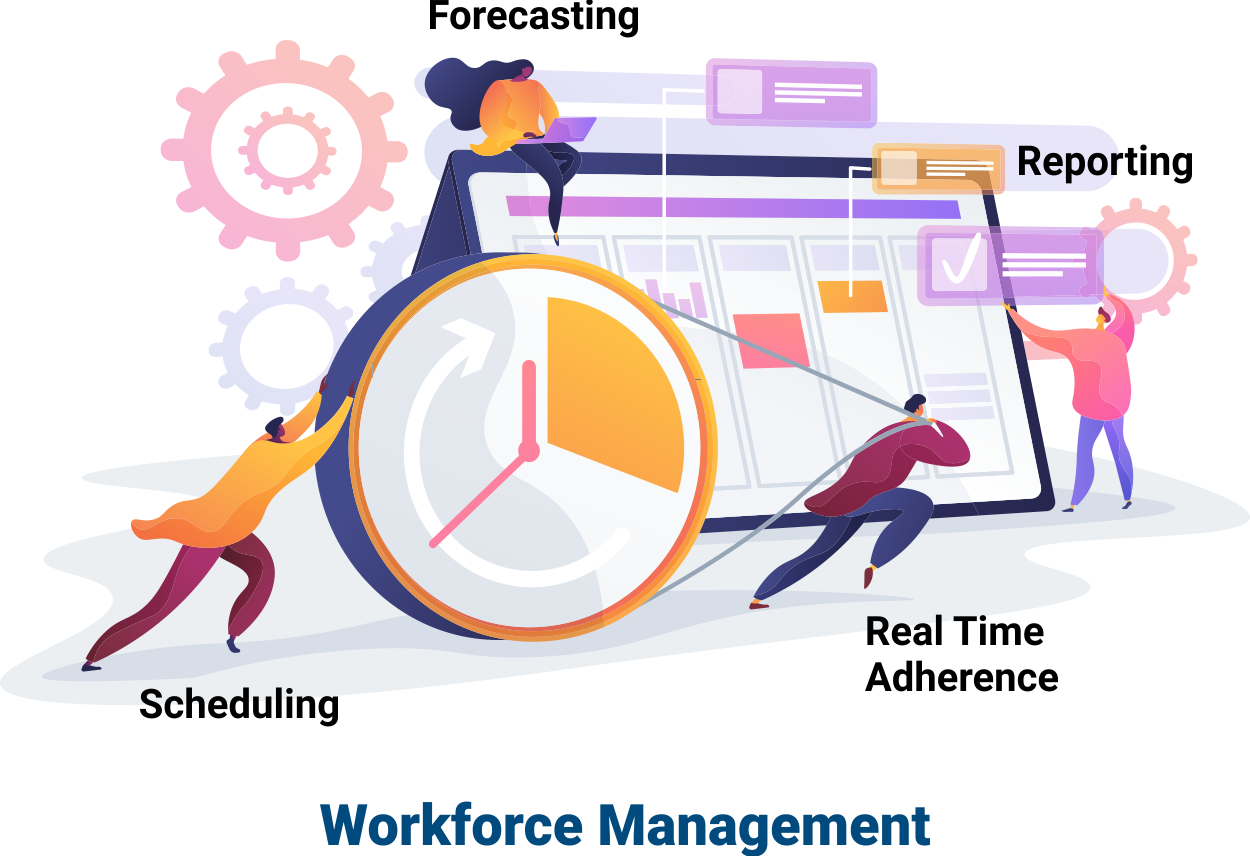Forecasting > Scheduling > Real Time Adherence > Reporting
Forecasting:
Forecasting is a process of predicting future volumes based on historical data. A forecaster uses historical data as an input into a Statistical model like Regression, ARIMA, Exponential smoothing, Seasonality Index, Trend projection, weighted moving averages etc. The output of the model is the forecasted numbers. The accuracy in forecasted numbers ensures robust planning and accurate budgeted numbers. Forecasting activity involves both short-term and long-term predictions for business. Projections for up to 3 months in advance is a Short-term forecast. Projections for over 6-12 months is a Long-term forecast and is used to budget FTE numbers in a Contact center. The accuracy of the forecast has a direct financial impact on the business.
The forecasting can be done using an excel file or via SAS; R; Python and other tools and languages. Timeseries forecasting is used for a contact center forecasting. It provides forecast both for volumes and Average handling time. Projections for attrition and shrinkage is also taken into consideration to calculate FTE requirements in a Capacity Plan. These forecasting volumes are also used to schedule employees at every 15/30 min intervals as per operational requirements. In addition to it, erlang calculations are used to calculate required FTE numbers which aid in annual budgeting exercise.
Capacity Planning:
A Capacity plan is a resource model used to calculate the required FTE using Erlang calculations. It requires input data as listed below and the output is weekly FTE’s projections to meet the forecasted volumes. These FTE numbers are provided for budgeting exercise. An annual Capacity plan is followed by monthly revised capacity plans for precision in numbers considering recent trends and arrival patterns to calculate FTE numbers
Capacity Plan Inputs:
- 1. Forecasted Calls
- 2. Forecasted AHT
- 3. Occupancy
- 4. FTE Weekly Hours
- 5. Service Level / Service Time
- 6. ASA (Optional target)
- 7. Operational window
- 8. Holidays
- 9. Shrinkage
- 10. Attrition
Scheduling:
As a contact center manager, it is important to stay organized to run your work smoothly. By placing the right skilled agents at the right time, contact center managers can maximize their abilities with efficient staff Scheduling.
More importantly, they can provide multiple options to their agents/working staff to decide on their work schedules. Organizations strategy on scheduling is purely based on operational requirements.
- One way of Scheduling is to look at Fairness of Schedules / Workdays / Vacations / Holidays etc. ie Shift fairness for every employee.
- Another way is Bidding based Scheduling where Employees are ranked based on their performance, and they bid for the shifts of choice based on their Ranks.
Scheduling team generates and Optimize schedules; considering current trends; adds Shrinkage & Occupancy to inflate interval-wise requirements; Optimizes breaks and holidays and releases schedules to operations. Scheduler also ensures best possible projected SL’s after analyzing interval level requirements.
Over time & other recommendations are also notified at schedule release. Multiple scenarios on KPI’s / SLA’s and for over and under staffing intervals are provided by Forecasters / Scheduler for further Business Decisions.
Real Time Adherence- RTA
Real Time Adherence looks at last day planning for Schedule changes; Absence and Shrinkage. This team manages queues and resources real time by allocating volumes to available agents ensuring SLA’s are met for every queue. It also recommends overtime and other planning concerns a day in advance.
A strong RTA team could manage to achieve SLA’s based on operational knowledge and proper utilization of resources. A minimum of 2-5% increase in projected SLA’s can be achieved with adherence to schedules as notified by RTA expert.
Reporting:
The entire data for current day’s performance at Interval level is provided by reporting team. It provides numerous reports at Agent level/ Process level / Queue / CT level.
Reporting is done using Excel or any Business Intelligence tool. The raw data is processed, and the information is shared with Operations. This information then becomes historical data for the planning team.
This now sums up the roadmap of WFM process. We hope that it has been useful and plenty of help for you! In case you need any assistance regarding the same, feel free to connect with our team at FutureSoft India.


